Locations
865 to 888 of 5396 results
-
B&B De Boksloot
B&B De Boksloot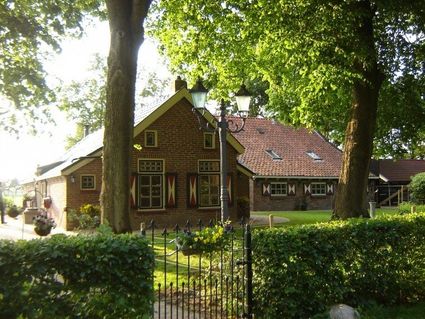 Ravenswoud
Ravenswoud
from your location
-
Nijkleaster
Nijkleaster HILAARD
HILAARD
from your location
-
Dekema State Jelsum
Dekema State Jelsum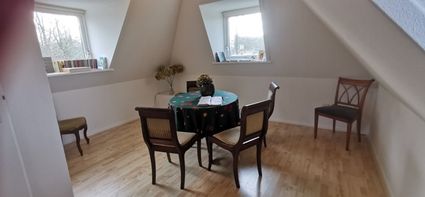 Jelsum
Jelsum
from your location
-
T'hús Sliepe
T'hús Sliepe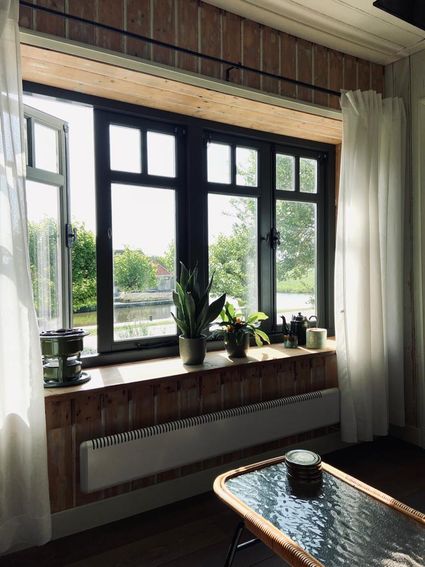 Parregea
Parregea
from your location
-
Camperkrompad
Camperkrompad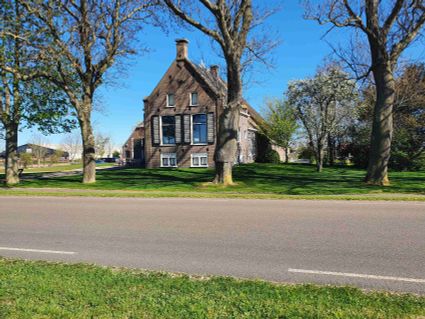 Echtenerbrug
Echtenerbrug
from your location
-
Startpunt route Fochteloo
Startpunt route Fochteloo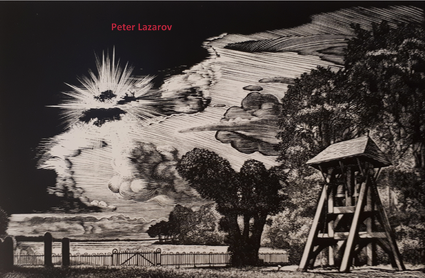 Appelscha
Appelscha
from your location
-
Waddengenot aan Zee
Waddengenot aan Zee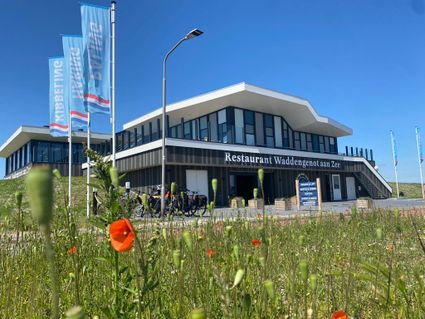 Lauwersoog
Lauwersoog
from your location
-
Sint Petruskerk Jistrum
Sint Petruskerk Jistrum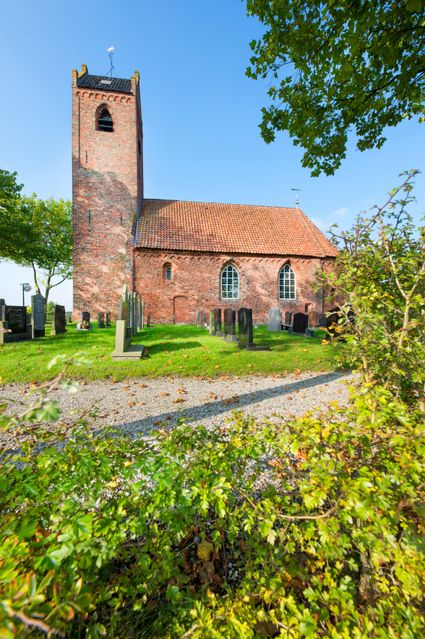 Jistrum
Jistrum
from your location
-
Bistro Âld Lemmer
Bistro Âld Lemmer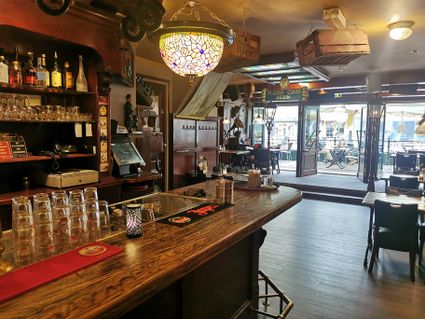 Lemmer
Lemmer
from your location
-
Watdataangaat
Watdataangaat Koehool
Koehool
from your location
-
Mûntsebuorsterpolder
Mûntsebuorsterpolder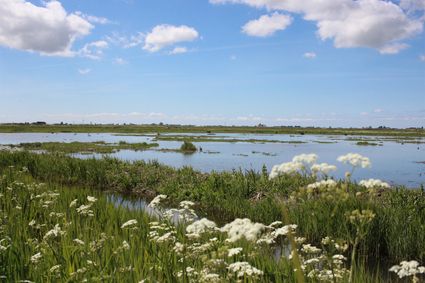 Nijhuizum
Nijhuizum
from your location
-
Eastermar - De Achterwei - Uitkijkpunt
Eastermar - De Achterwei - Uitkijkpunt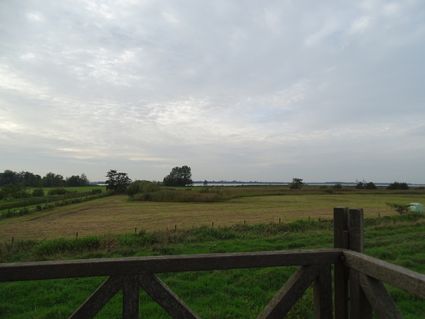 Eastermar
Eastermar
from your location
-
De Stobbepoele
De Stobbepoele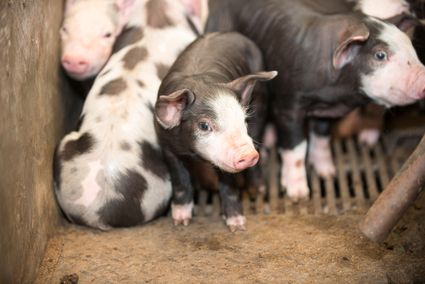 Elsloo
Elsloo
from your location
-
Visitor Centre and VVV Hindeloopen
Visitor Centre and VVV Hindeloopen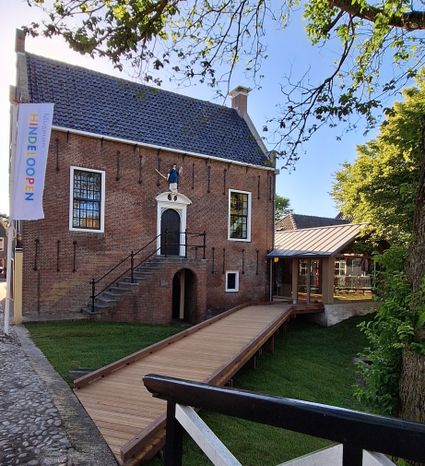 Hindeloopen
Hindeloopen
from your location
-
Headmaster Jakob Klok in the resistance
Headmaster Jakob Klok in the resistance
During the war, Jakob (Jaap) Klok ended up in the resistance in Dantumadeel, where he played an important role. At the time, he lived with his wife and four children in Akkerwoude, where he was headmaster of the school at Hearewei 13. He stayed there until 1947 and will always be remembered as "Headmaster Klok."
Jaap Klok was active socially and in politics as a member of the Dutch Social Democratic Labour Party (SDAP). When party meetings were banned by the German occupiers, Jaap imperceptibly became ever more involved in resistance activities. He passed on party information, distributed illegal newspapers, and looked for addresses for people in hiding. Jaap Klok joined the LO, the National Organisation for Aid to people in Hiding, and became the Akkerwoude village commander.
Although people did not know exactly what he did, it was known that he was in the resistance. Despite the fact that his name circulated among NSB members, he decided not to go into hiding, but instead tried to be even more careful and to sleep at home more often than not.
As the war drew to a close, Jaap became very busy. The Dutch government in exile was calling on railway workers to go on strike. The resistance arranged for the hiding. On 15 December 1944, a group of about sixty refugees from Arnhem arrived at his school. Jaap was indirectly involved in the evacuation committee, which was looking for addresses for the unfortunate Arnhem residents.
Shortly thereafter, he was warned at the schoolhouse that during a raid in Murmerwoude, explicit questions were asked about schoolmaster Klok. Jaap did not hesitate a second and quickly left the house. And not a moment too soon, as ten minutes after his departure the Germans were already on his doorstep. From that moment on, Jaap knew that he had to be very careful. He hardly ever slept at home anymore.
From January 1945 onwards, the situation became explosive. After the discovery of weapons on a farm in Aalsum, the Germans became fanatical. They relentlessly hunted down resistance fighters and used any means to make those who were caught talk. The name "Jaap Klok" was also mentioned during these interrogations. Sufficient reason to leave then and there, with his whole family. The children stayed with relatives. He and his wife went into hiding elsewhere.
During the last weeks of the war, Jaap was very busy. Much had to be organised and discussed within the resistance to expel the Germans and prepare for the arrival of the Canadians. Just before Dantumadeel was liberated, the inhabitants were already beside themselves with joy. They raised the flag and took to the streets en masse to celebrate. Because of his resistance work, Jaap knew exactly what the situation was with regard to the liberation. He climbed onto the balcony of the town hall and addressed the people. After all, the danger had not yet passed. Even when that was the case shortly thereafter, he ensured that peace was maintained among the population of Dantumadeel and thus prevented the molestation of a number of NSB members.
After the war, he held many administrative positions in the province of Friesland. In 1984, Jaap Klok died at the age of 91. Fifteen years later, a statue of him was erected in Akkerwoude, which was then called Damwoude, as a tribute.
From the book "De oorlog een gezicht geven" (deel 6) – Dantumadeel in de periode '40 - '45 by Yvonne te Nijenhuis and Reinder H. Postma
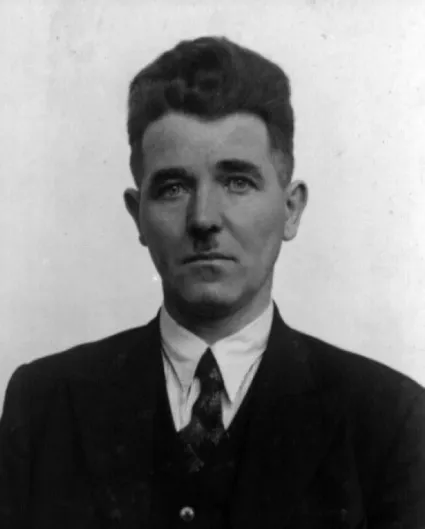 Damwald
Damwald
from your location
-
-
TIP punt Dekema State Jelsum
TIP punt Dekema State Jelsum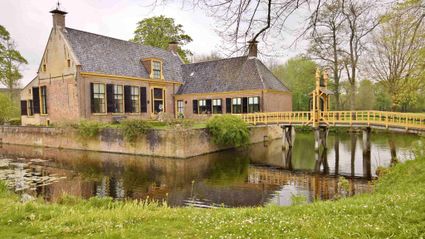 Jelsum
Jelsum
from your location
-
Park Baayvilla's
Park Baayvilla's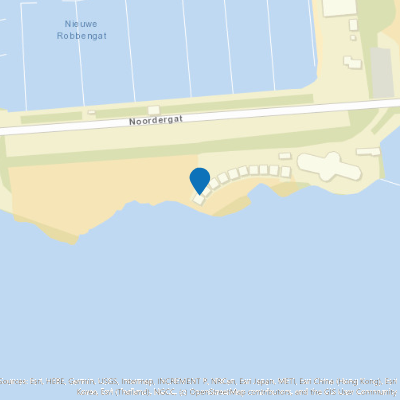 Lauwersoog
Lauwersoog
from your location
-
Havenplein 14
Havenplein 14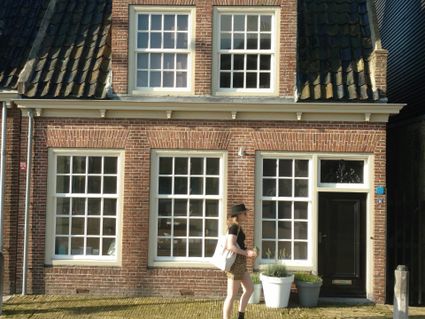 Harlingen
Harlingen
from your location
-
Noardermar
Noardermar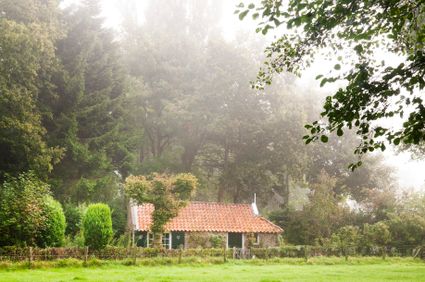 Burgum
Burgum
from your location
-
Paal 3: Einde Efterom
-


Accept cookies to see this content.
Paal 3: Einde Efterom
Dit punt is onderdeel van de route 'It Paad Werom Terherne'. Bekijk hier de hele route. Deze route start bij het grote parkeerterrein in het dorp, Koailan 2.
(beluister hier het audioverhaal)
Blijf hier maar even bij dit paaltje staan en kijk maar eens goed om je heen. Zie je dat bosje daar recht voor je? Aan de overkant van het weilandje? Ssst, maak maar geen geluid. En kijk goed. Ja! Daar! Zie je de mensen? Ze zijn op zoek naar iets. Om te overleven. Zoals ik al zei is het niet alleen een tijd van armoede, maar ook van Veepest. Soms moeten hele stallen worden geruimd om verdere besmetting te voorkomen. De koeien worden dan begraven op plekken als hier tegenover. Later worden er dan bomen op geplant. Maar die mensen die naar nu aan het graven zijn? Dat zijn mensen die vanwege honger in het holst van de nacht op zoek zijn naar vlees dat ze nog kunnen eten. Veepest of niet…
Na het schelpenpad gaan we linksaf. We steken de weg over en lopen de Buorren in, naar de ingang van het vakantiepark. Het park zie je zo rechts van je, daar bij de zwarte poort. Daar stoppen we even.
Wat een grote huizen staan hier, vind je niet? Luxe vakantiehuizen gericht op het water. Je ziet ze vanaf de Terhernster Puollen als skyline van Terherne. Ik ken deze plek heel anders. En dit is dan ook de plek die mij het meest aan het hart gaat. Ik vertel je waarom.Daarvoor gaan we terug naar het jaar 1686
Ja, daar zijn we. Je staat nu op een verlaten en onverharde weg. Voor en achter je zijn weilanden, alleen Café Zevenwouden (het café dat hier links om de hoek staat) staat er al, net als die kleine huisjes eromheen die je vanaf hier al een beetje kunt zien.Tsja, dit vakantiepark… Op deze specifieke plek… In mijn tijd was dit wel anders. Toen was dit een stuk weiland, dat na mijn dood een heel specifieke naam kreeg: ‘It Earmefintsje’, dat zoiets betekent als ‘weiland voor de armen’. En ik zal maar meteen met de deur in huis vallen: dit was mijn stuk grond. Ik liet het na aan de Doopsgezinde kerk met de restrictie dat de opbrengst ten goede moest komen aan de armen.
Dit was voor mij zo ontzettend belangrijk, dat ik zelfs op zijn grafsteen heb laten zetten dat dit stukje weiland ‘tot in den eeuwige dagen’ beschikbaar moet zijn voor mensen die het minder goed hebben. Wat denk jij? Was dit realistisch? Dit vertel ik je straks, bij mijn rustplaats.
Want we maken eerst nog een sprong naar 1840 en. bekijken nu eerst de bruine schuur achter je. Die in deze tijd, ‘Het Blauwe Hok’ heet, naar zijn eerste kleur. Loop er maar even heen. De verlaten onverharde weg waarover we net liepen, komt langs deze schuur en is het wagenhok van de rentenierswoning die hier achter staat, daar komen we zo.
In latere tijden kerven de jongelui die uit het café kwamen hun ‘verkeringen’ in de achterdeur van deze schuur. Soms na een stiekeme of hartstochtelijke ontmoeting achter het wagenhok. De plaatselijke schilder draagt hier een warm hart voor en heeft deze liefdesverklaringen altijd in ere gehouden. Je moet goed kijken in deze achterdeuren. Zie jij ze? Of ben jij misschien nog één van die jongeren die zijn liefde hier vereeuwigde?We lopen nu de bocht om.
Dit is de rentenierswoning. Op de deur staat nummer 13 – 15 en in de gevel naast de voordeur zie je een steen met de naam ‘Boetje’. De zoon van de eigenaar van dit huis woont op een boerderij verderop. Een elke keer als hij naar de kerk rijdt, stalt hij zijn paard en wagen in deze schuur.
Zoals ik al zei, ligt de oorsprong van het dorp op deze plek. Dit was het oorspronkelijke centrum van Terherne. Kijk maar rustig om je heen en loop een beetje rond.
We gaan eerst naar 1686, de tijd van het ontstaan van het‘Earmefintsje’.
Achter ’t Earmefintsje, waar we net stonden, ligt nog een vaart. De lykfeart, ofwel Lijkvaart. Deze vaart komt uit op het ‘t Far, het water dat hier naast café Zevenwouden ligt. Als er iemand overlijdt, wordt de kist in een praam vervoerd via deze vaart en legt men daar iets verderop aan. Tussen die oude huisjes achter het café loopt een heel smal steegje. Hier past preciés een doodskist doorheen. Ik heb ’s nachts wel eens het idee in één van de hoofden van de schippers gefluisterd om ervoor te kiezen via de Puollen om deze huisjes heen te varen en rechtstreeks bij het kerkhof aan te meren. Maar dat ging er met geen beweging in. Er heerst onder de mensen namelijk een stevig bijgeloof dat overledenen alleen via de Lykfeart vervoerd mogen worden, omdat het anders tot ongelukken zal leiden. De vaart wordt gedempt rond 1960. En dat is het moment in de tijd dat het dorp drastisch verandert.
Goed, ik weet niet hoe het met jou zit, maar ik heb dorst gekregen. Als het café open is, gaan we naar binnen en nemen we er eentje aan de bar, of misschien is het warm genoeg voor het terras. Ga even rustig zitten. Dan vertel ik je een ander verhaal.
Dit punt is onderdeel van de route 'It Paad Werom Terherne'. Klik hier om terug te gaan naar de route. Deze route start bij het grote parkeerterrein in het dorp, Koailan 2.
 Terherne
Terherne
from your location
-
-
Molen Tjasker
Molen Tjasker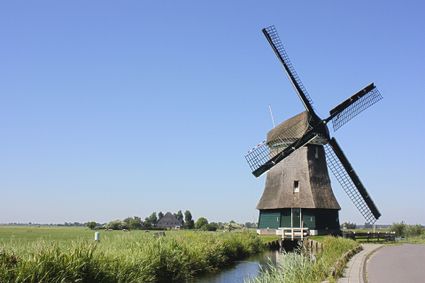 Grou
Grou
from your location
-
Plaza Padel Sneek
Plaza Padel Sneek Sneek
Sneek
from your location
-
Ambush at Oldeholtpade
Ambush at Oldeholtpade
On 12 April, the bridge over the Tjonger in Mildam fell into the hands of the Royal Canadian Dragoons reconnaissance regiment. Because the occupier had blown up many other bridges, the Canadians attached great importance to preserving this bridge for the crossing of other Canadian units. That is why dozens of armoured cars, mobile artillery guns and numerous other vehicles were sent to Mildam that day to reinforce the bridgehead over the Tjonger.
In one of those armoured cars, a Staghound, was 24-year-old Trooper Wilfred Robert George Berry from Ontario. The young Canadian had volunteered for military service in Europe. And had already fought with the Royal Canadian Dragoons in Italy. At the end of February 1945, they were transferred to Northwest Europe.
For Berry, the war ended in Friesland. In Oldeholtpade, on the road to Wolvega, his vehicle drove into an ambush along with at least one other Staghound. In the vicinity of a broken-down German car, German soldiers had hidden with Panzerfausts. The Panzerfaust was a very powerful and easy-to-use anti-tank weapon. The first shot missed, but the second projectile hit the front Staghound, on the side where driver Wilfred Berry was sitting at the time.2 The Staghound went off the road and overturned. The three other crew members got injured, but were able to leave the vehicle and took cover behind the second Staghound. One of them stated:
"[…]Flames burst through the turret, where the officer and I were half in and half out of the hatches. Any skin surface not covered was burned and the flames badly singed our eyebrows, eyelashes, moustaches and hands, sending me and the officer both wounded to the field hospital."3
Immediately after the first Staghound was hit, the second Staghound opened fire on the Germans. Seriously injured, Wilfred Berry remained in the vehicle. After about fifteen minutes of shooting back and forth, the other Staghounds retreated towards Oldeberkoop. The exact reason for this remains unclear. Berry was already dying and was briefly cared for by the elderly Andriesje Dekker-Oosterhof in the vehicle when the shooting had stopped. The tragedy had unfolded right in front of her house. He died in the wreck shortly afterwards.
Berry's remains were eventually transferred to the farm on "De Bult" in Oldeberkoop and buried there. After the war he would be reburied at the Canadian war cemetery in Holten. The other crew members were eventually able to return to their units after receiving medical treatment. The commander only had burns on his face.
The event made a deep impression on the inhabitants of Oldeholtpade. In 1945, a monument to Berry was erected. And in 1965, a street was named in his honour.
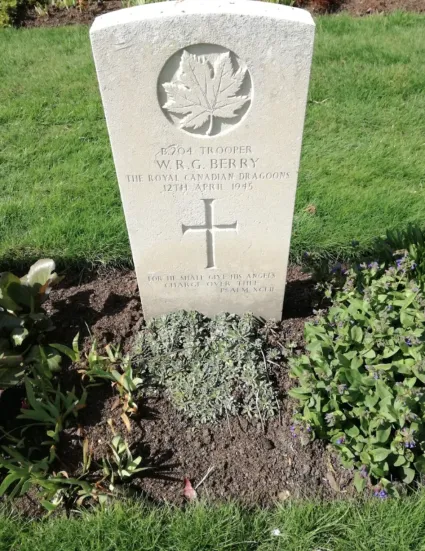 Oldeholtpade
Oldeholtpade
from your location
-
-
Wadlicht
Wadlicht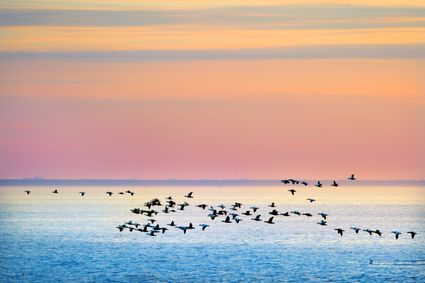 moddergat
moddergat
from your location

